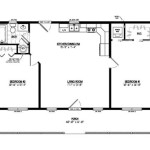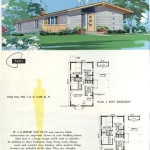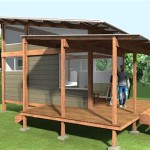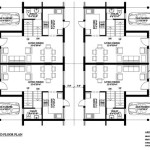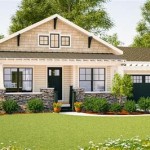House Plans For 2 Family Homes In Georgia
Georgia, with its diverse landscapes and growing population, presents a compelling market for two-family homes. These dwellings, designed to house two separate families under one roof, offer a range of benefits, from shared living costs to opportunities for multi-generational living and rental income. Understanding the nuances of designing and building such homes in Georgia requires careful consideration of local building codes, zoning regulations, and the specific needs of the intended occupants. This article explores key aspects of house plans for two-family homes in Georgia, examining design considerations, cost factors, and legal requirements.
The concept of a two-family home, also known as a duplex or a multi-family dwelling, is not new, but its popularity has been steadily increasing. Rising housing costs and a growing desire for closer family ties have contributed to the demand for these types of properties. In Georgia, where land prices in certain areas can be substantial, building a two-family home can be a financially sound decision, allowing two families to share the burden of mortgage payments, property taxes, and maintenance expenses.
However, constructing a two-family home is more complex than building a single-family residence. Careful planning and adherence to local regulations are crucial to ensure a successful project. The design must accommodate the needs of two distinct households, providing privacy and independence while maintaining a cohesive architectural style. Moreover, compliance with zoning ordinances and building codes is essential to avoid legal complications and ensure the safety and livability of the property.
Understanding Zoning Regulations in Georgia
Zoning regulations are a critical consideration when planning a two-family home in Georgia. These regulations, established by local governments, dictate what types of structures can be built in specific areas. Not all areas are zoned for multi-family dwellings. Therefore, the first step is to determine whether the desired property is located in a zone that permits two-family homes. This information can be obtained from the local planning and zoning department.
Zoning regulations typically address various aspects of construction, including minimum lot size, setbacks (the distance a building must be from property lines), building height, and parking requirements. These regulations can vary significantly from one jurisdiction to another, even within the same county. For example, a city might have stricter zoning rules than a rural area. Understanding these local nuances is essential to avoid costly mistakes and ensure that the proposed two-family home complies with all applicable requirements.
Furthermore, some zoning ordinances may restrict the types of relationships that can exist between the two families residing in the dwelling. For example, a regulation might stipulate that one unit must be occupied by the owner of the property. These types of restrictions are less common but should be investigated to avoid potential enforcement issues. It is generally advisable to consult with a local zoning attorney or land-use consultant to navigate these complex regulations effectively.
Variance requests are possible in some situations. If the proposed design does not fully comply with zoning regulations, it may be possible to request a variance from the local zoning board. A variance is an exception to the zoning rules, granted when strict adherence would create an undue hardship for the property owner. Obtaining a variance can be a challenging process, often requiring detailed documentation and persuasive arguments demonstrating the necessity of the exception.
Key Design Considerations for Two-Family Homes
Designing a two-family home requires careful attention to the needs of both families who will be residing in the dwelling. The goal is to create two distinct living spaces that offer privacy and independence while still maintaining a sense of architectural unity. Several key design considerations must be addressed to achieve this balance.
One of the most important considerations is the layout of the two units. Common configurations include side-by-side duplexes, where each unit occupies half of the building, and up-and-down duplexes, where one unit is located above the other. The choice of layout will depend on the size and shape of the lot, as well as the preferences of the future occupants. Side-by-side duplexes often provide a greater sense of privacy, as each unit has its own entrance and yard space. Up-and-down duplexes can be more cost-effective to build, as they share a common foundation and roof.
Providing adequate separation between the two units is crucial for maintaining privacy. This can be achieved through careful placement of walls, doors, and windows. Soundproofing is another important consideration, particularly in up-and-down duplexes. Using sound-deadening insulation and resilient channels can help to minimize noise transmission between the units. Separate entrances and private outdoor spaces, such as patios or balconies, are also essential for creating a sense of independence.
Accessibility is another increasingly important design consideration. As populations age, the demand for accessible housing is growing. Incorporating features such as ramps, wider doorways, and grab bars can make the two-family home more accessible to people with disabilities or mobility limitations. Universal design principles, which aim to create spaces that are usable by people of all abilities, can be applied throughout the design process.
Furthermore, energy efficiency should be a primary focus. Implementing energy-efficient building practices, such as using high-performance insulation, energy-efficient windows and doors, and solar panels, can significantly reduce utility costs for both families. These features not only save money but also contribute to a more sustainable environment. In Georgia, various tax incentives and rebates are available for energy-efficient construction, making it even more attractive to incorporate these features into the design.
Understanding Cost Factors and Financing Options
Building a two-family home in Georgia involves significant financial investment. Understanding the various cost factors and exploring available financing options is crucial for ensuring the project's feasibility. The total cost will depend on several factors, including the size and complexity of the design, the quality of materials used, and the location of the property. It is essential to develop a detailed budget that accounts for all potential expenses.
Land acquisition is often the most significant cost component. Land prices in Georgia can vary greatly depending on the location. Areas closer to major cities or with desirable amenities tend to be more expensive. It is crucial to research land prices thoroughly and factor this cost into the overall budget. Conducting a soil test and survey of the property is also recommended to identify any potential issues that could add to the cost.
Construction costs will also vary depending on the design and materials used. Obtaining multiple bids from qualified contractors is essential for ensuring competitive pricing. The bids should include a detailed breakdown of labor and materials costs. It is also important to verify the contractor's licenses and insurance to avoid potential liability issues. Choosing durable and low-maintenance materials can help to reduce long-term maintenance costs.
Financing a two-family home can be more complex than financing a single-family residence. Traditional mortgage lenders may be hesitant to finance multi-family dwellings, particularly if the borrower does not have experience managing rental properties. However, several financing options are available, including conventional mortgages, FHA loans, and construction loans. A conventional mortgage may be available if the borrower intends to occupy one of the units as their primary residence. FHA loans are often available for multi-family properties, but they typically have stricter requirements and require higher down payments. Construction loans are specifically designed to finance the construction of new buildings. These loans typically have higher interest rates and shorter repayment terms than traditional mortgages.
Exploring government assistance programs can also be beneficial. The Georgia Department of Community Affairs offers various programs that provide financial assistance to developers of affordable housing. These programs may include tax credits, grants, and low-interest loans. Eligibility requirements vary depending on the program. Consulting with a financial advisor or loan officer can help to identify the most suitable financing options and navigate the application process.
In conclusion, planning a two-family home in Georgia requires careful attention to zoning regulations, design considerations, and cost factors. By understanding these key aspects, individuals can navigate the complexities of building a successful and financially viable two-family dwelling.

12 Simple 2 Bedroom House Plans With Garages Houseplans Blog Com

One Story Duplex House Plans With Garage In The Middle Blog Dreamhomesource Com

Georgia Farmhouse 2 Story House Plan With Front Porch

House Plans Floor Blueprints

8 Fabulous Family Home Plans Blog Dreamhomesource Com

Multigenerational House Plans With Apartments Separate Entrances Blog Eplans Com

12 Simple 2 Bedroom House Plans With Garages Houseplans Blog Com

Spacious And Open Best Floor Plans For Families Blog Homeplans Com

Reliant Homes Georgia Home Builder South Ina

Plan 75977 Modern Style House Floor With Covered Lanai
Related Posts


